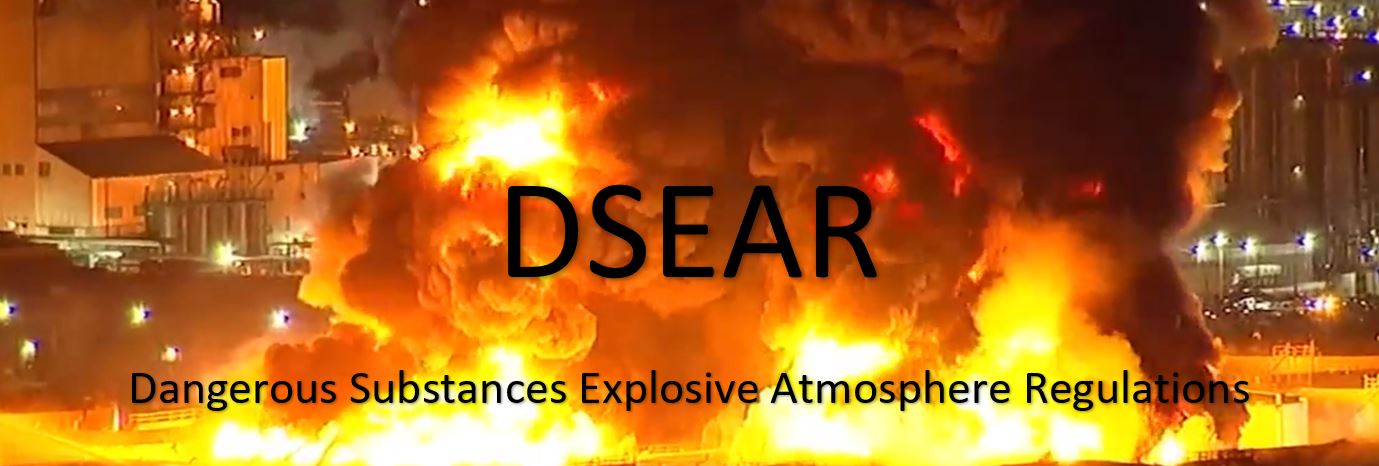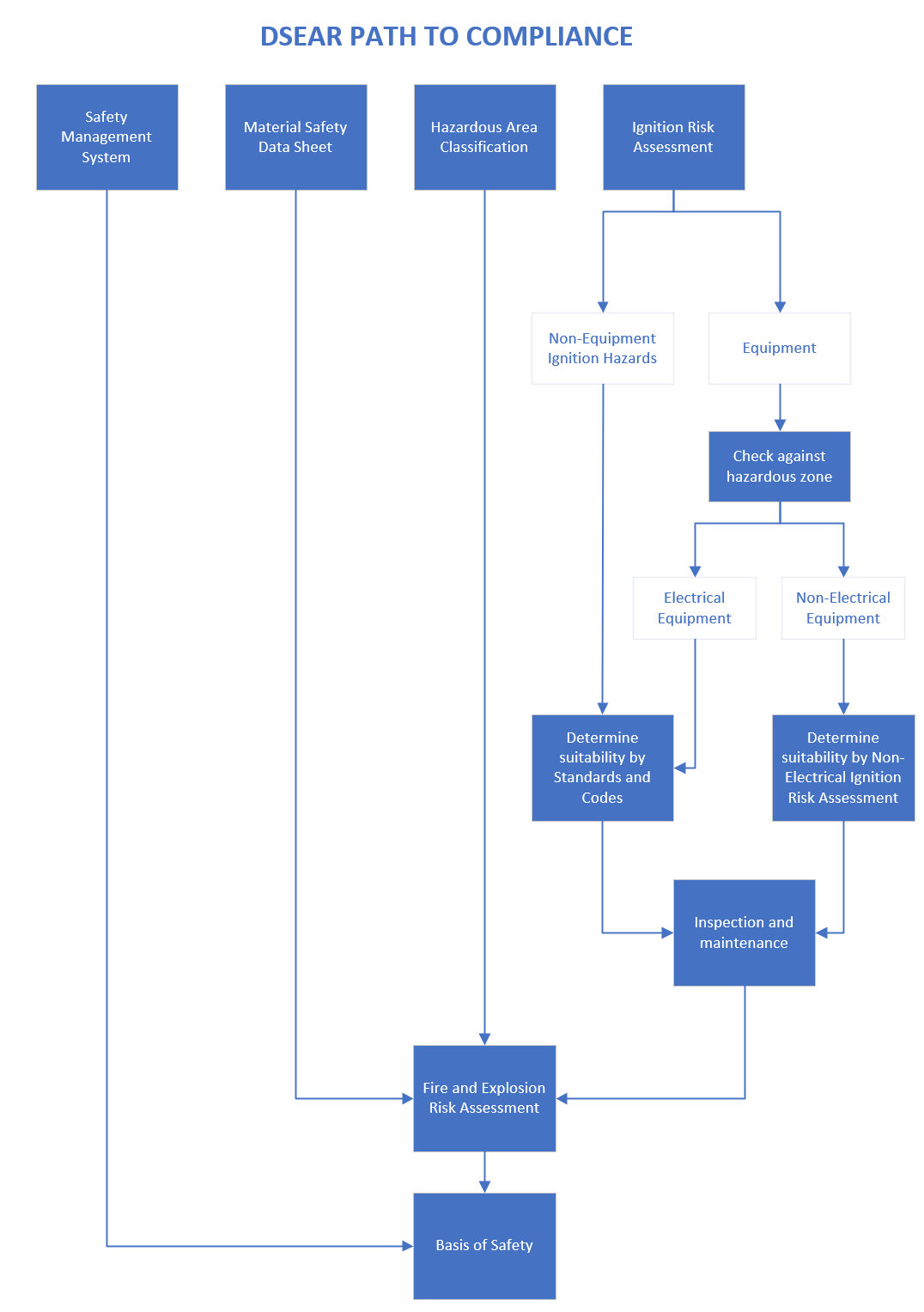DSEAR Design Process
The DSEAR design process consists of four main stages of work
- Fact-finding
- Risk assessment
- Design
- Verification
Fact-finding
- Company objectives and requirements: Obtain a detailed understanding of the current and the future requirements for the process. Understand production requirements and schedules.
- Production processes: A detailed understanding of the food manufacturing process. This is essential if the solution designed is to be both safe and efficient. This work usually requires a detailed site survey and detailed discussion about how the plant is to work.
- State objectives: Study of the high-level objectives set by DSEAR consultants. These objectives will usually be quite general and point out inadequacies such as “Fit a device to prevent the propagation of an explosion between process areas”.
Risk assessment
- Dangerous substances: Understanding the dangerous substances that may cause a fire or an explosion is necessary. This data is usually provided in a safety data sheet obtained from the supplier of the bulk material. When this material is processed or mixed with other materials the substance changes. An explosive characterisation report may be necessary from a test laboratory.
- Hazardous area classification: The hazardous area classification (HAC) is used to identify where explosive concentrations of the dangerous substance may be located. The process for identifying the HAC may be started in the plant DSEAR audit. As a detailed understanding of the plant progresses the HAC must be refined to reflect a more accurate assessment. Usually, the HAC is presented in both a tabular and diagrammatic form.
- Ignition sources: It is important to identify all possible ignition sources that may occur for each of the HAC zones identified earlier. These ignition sources may include heating such as bearings or seals, sparking from metal to metal contact, static electricity from rubbing materials against surfaces for example. This information is listed in a detailed chart for use in the risk assessment.
- Risk assessment: A detailed risk assessment is carried out which looks at the possibility of likelihood of an explosion using the information gained from the HAC and ignition risk assessment. The risk assessment also considers the consequences of a fire or explosion. Where possible it is necessary to eliminate the dangerous substance, or remove the process step, or remove the ignition source. If it is not possible to eliminate the risk of fire or explosion, then protective systems may need to be employed. At this stage, it is possible to select components that are suitable for working safely in the environment.
Design
- Process design: The process design is driven by production requirements but must now implement the changes necessary for DSEAR compliance. The process design will usually be summarised in a process and instrumentation diagram, and functional description. Control and functional safety interfaces need to be established. Instrument and component lists are generated.
- Structural design: Some protective systems require that the equipment must withstand some degree of overpressure. For example, if it is considered necessary to fit an explosion vent to a vessel, the vessel will need to be strong enough to take the vented pressure. For other areas of the plant such as pipework, it is usual that the equipment must be capable of withstanding the maximum pressure of an explosion. At this stage, it is often necessary to complete detailed calculations for the strength of the vessel or equipment. Where necessary the equipment will need to be strengthened to accept the pressures.
- Component specification: At this stage, the suitability of components is considered that will satisfy the requirements of the design. Equipment that is used in explosive atmospheres must be certified for the environment where the equipment is to be used. For electrical equipment, the suitability is governed directly from standards. For non-electrical equipment, certification may be available. Alternatively, a detailed risk assessment is required.
- Mechanical design: Detailed drawings of the plant are prepared which prove the equipment can be successfully integrated. Details of parts that must be manufactured are drawn.
- Control design: Often the control of the system is part of a wider production system. Dodman can work with resident control specialists or provide a control specialist.
- Functional Design Specification: All the above data is collated and summarised in a document titled Design Philosophy, but this sometimes referred to as the Functional Design Specification.
Certification
- Component Dossier: A component dossier can be collated which will be used to prove that the equipment used on the plant meets the requirements of the risk assessment. With the detailed knowledge that synergy exists between the explosive atmosphere, the possibility of ignition and the consequences of explosion components can be selected with confidence.
- DSEAR Audit: A DSEAR audit checklist ensures that all the requirements of DSEAR are met in full. This audit details any actions that remain open and necessary to allow the system to be signed off.
- Certification: Once all these areas have been closed off the certificate can be signed, and the project closed as complete.








